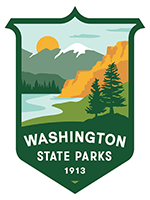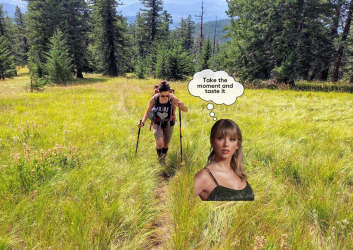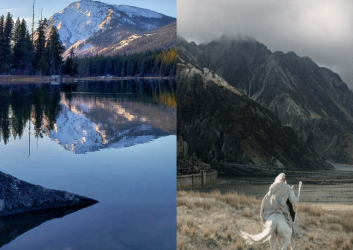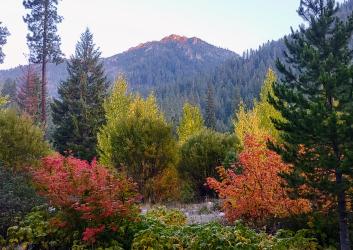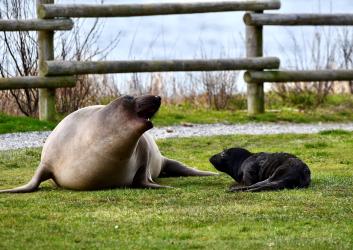Campground bike safety for kids
"It took him 376 lawn jobs to get that bike! That's his most favorite thing in the world!" — The Goonies
By Lisa Whalen, Park Ranger 1, Grayland Beach
As a kid, some of my fondest memories include riding my bike through campgrounds in a state park on the coast of South Carolina. These days were my first taste of independence, as my mom would come up with things she “needed” from the campground store. She’d give me a few dollars and let me go on my mission all by myself. I felt so empowered, returning with the much-needed ketchup or napkins, and she always let me spend the change on candy or ice cream.
Today, in Washington’s state parks, it’s a similar scene. Kids go riding in packs (like The Goonies, with upgrades) around campgrounds, making friends and discovering the glory of being on their own a bit.
Meanwhile, the adults get to have their own conversations and quiet time to unwind. It’s a win-win for everyone!
As families anticipate their state park vacation this summer, it’s critical to make sure everyone understands basic bike safety.
Most parents talk with their kids about defensive biking on their streets at home, but It’s easy to let down our guard and think campground riding is always safe. A campground is indeed different from an urban street, a suburban cul de sac, or a rural road – and it has unique hazards.

Protect your head
The first step to ensure safe riding in parks is the same as it is at home – have a helmet that fits and wear it correctly. If your helmet fits but isn’t worn correctly it won’t do the job it’s meant to do, which is to prevent a potentially life-changing head injury.
Rules of the road
Once you’ve got all helmets fitted and on right, remind the little ones to ward off “Vacation Brain” while riding. It’s easy to zone out and zoom past road signs without reading them. Please remind the kids to follow all signs, such as Stop, Yield and Do Not Enter signs. Adults can also model that practice when out for a family ride.
Many campground loops are one-way streets, and bike traffic is no exception. Ride in the correct direction, and parents – make sure your small cyclists know not to “pop out” of bushes or grassy areas into roads without checking to make sure the way is clear.

Dealing with blind spots
Another traffic issue unique to campgrounds is the number of large RVs arriving, departing and rolling through the park. These behemoths can have whale-sized blind spots, so it’s important to watch for them when they’re turning or backing up. Of course, the onus is always on the motor vehicle driver, but defensive riding will go a long way toward preventing accidents and near-misses.


As a park ranger, I also need bicyclists to watch out for me and my blind spots. Park vehicles drive through the park making frequent stops and backups, so it’s important to be on the lookout for us.
In that vein – and this comes directly from an in-park experience – don’t ever grab onto any park vehicle and attempt to hold on while the vehicle is moving. Marty McFly made it look cool in Back to the Future, but grabbing onto the back of a motor vehicle (even a park aide golf cart) is never cool. In fact, it’s quite dangerous.
Light up your bike
Finally, while kids of the ‘70s rode bikes until dark, we encourage parents to corral the kiddos by dusk when it’s hardest for drivers to see. Even if you’ve got treats or activities to sweeten that deal, it never hurts to make sure their bikes are lit up like Christmas trees and that they have headlamps to light their way.
Riding bikes in parks is a quintessential part of the park experience, so please make sure your budding bicyclists enjoy it safely.
See you out in the park!
Originally published May 02, 2024
